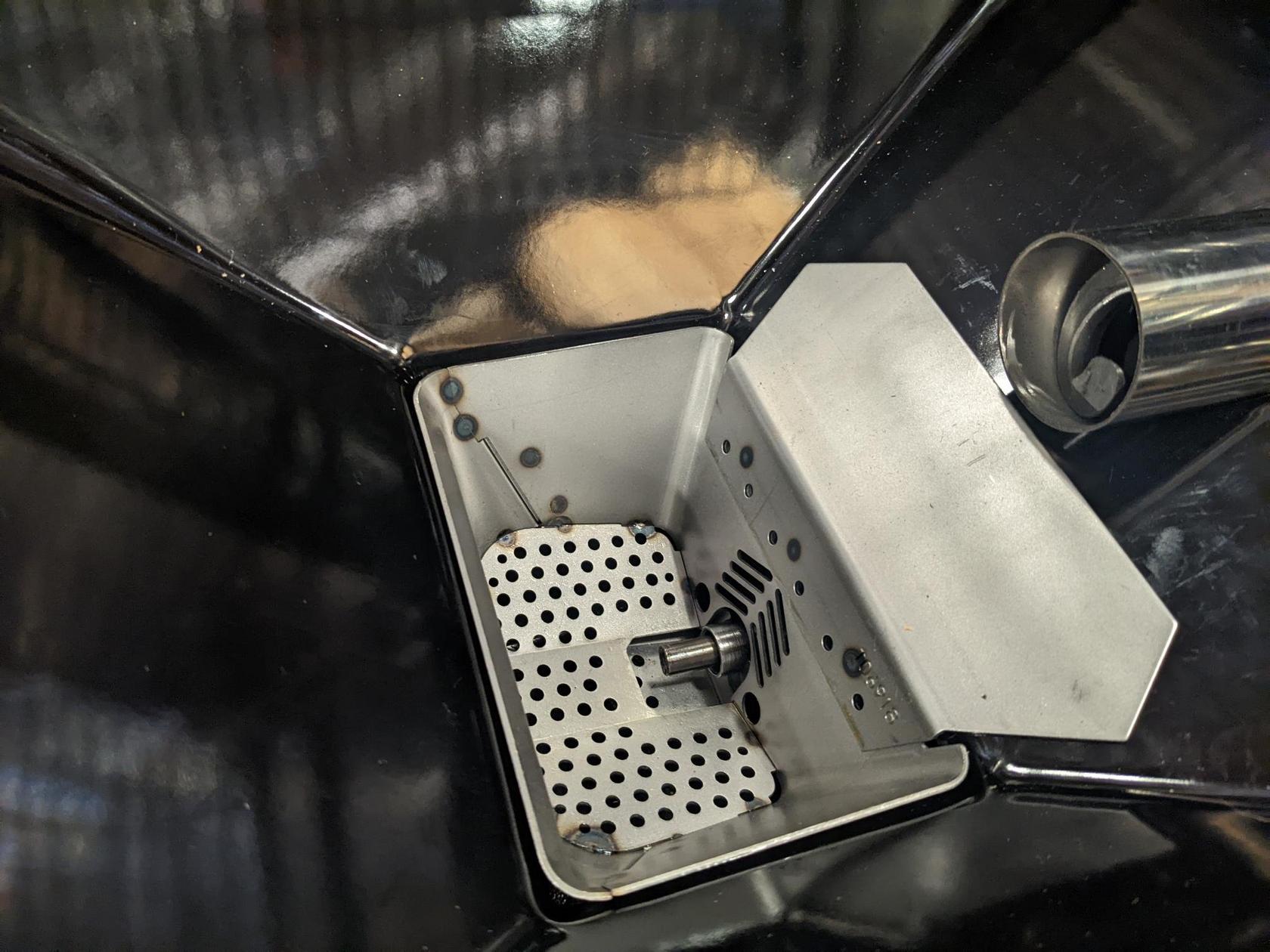
Pre-Grilling Checklist
Check Your Pellets
Your pellets are the most important factor to grilling success. They should be shiny and snap easily.
Keep your pellets away from moisture. If you live in a humid climate, we strongly encourage you keeping your pellets in an air-tight container and indoors -- yes, even your unopened bags too. Wet pellets will have a very hard time igniting and can get stuck together and clog your auger. If the auger can't deliver pellets to the firepot, you'll be eating some very undercooked food.
Keep Your Grill Clean
A clean grill is a happy grill. We suggest cleaning your grill at minimum after every 20 hours of cook time. Clearing away ash, sawdust and grease will ensure your grill ignites properly, gets to temperature quickly, and consumes pellets efficiently.
Clean Your Hopper
It's easy to forget your hopper when cleaning your grill -- after all, there's no food in there so why would you need to clean it?
You may notice small amounts of sawdust when emptying the last of a bag of pellets. Over time, that sawdust will find its way down to the bottom of the hopper, into the auger and eventually to your firepot. Since sawdust can't ignite, forgetting to vacuum out the sawdust from the bottom of your hopper during regular maintenance can result in several temperature management issues such as not getting to temp and slow ignition times.
Check Your Firepot
Your firepot should sit flush with the belly of the grill. If the firepot catches on the auger tube or is not flush, it can allow pellets to fall under the firepot and may potentially ignite.

Ignition & Preheat
Keep Your Lid Closed
When it comes to igniting and preheating your grill, "set it and forget it." Your new Timberline and Ironwood grill is designed to ignite and preheat with the lid closed. Opening your lid during this time can prolong preheat time and disrupt the grill from performing as designed throughout the rest of your cook.
Preheat Time
New Timberlines and Ironwoods are large grills, and because of their size, preheat time can take longer than expected, especially during seasoning and its first few cooks. Over time you will find that your grill will preheat more quickly.
During Your Cook
Temperature Fluctuations & Overshooting
Just like your kitchen oven, your Traeger grill cooks on an average. This means that when set to say, 350°F, the actual internal temperature may fluctuate ±15°F.
Unlike your kitchen oven, however, Traeger grills shows you real-time temperature instead of just the average like traditional ovens do. To prevent unecessary fluctuations, try not to adjust your grill's temperature too often and keep your lid closed as much as possible.
Keep in mind that it is completely normal for your grill to rise above the set temp when igniting, setting a new temp or after opening the lid. The grill will settle into the correct temperature quickly.
If You're Looking, You're not Cooking -- Keep Your Lid Closed
We said it about ignition, and we'll say it here, "set it and forget it." Pellet-fueled cooking is much different than open-flame cooking. Think of your grill like an outdoor oven -- you wouldn't keep opening your kitchen oven while cooking, so don't do it on your Traeger either.
Every time you open your lid, you lose heat -- you'll see that reflected on the temperature on your controller -- and your grill will have to work overtime to get that temperature back to where you want it. Remember that as the grill gets back to temp, it will likely rise above the set temp, but it will settle back quickly.
Super Smoke
Super Smoke is a Traegerhood favorite feature as it increases smoke production, and in turn increases smoke flavor. This function works only on temps up to 225°F and will turn off automatically when set to a temperature higher than that.
Keep in mind that you may find more temperature fluctuations when using Super Smoke than when not using it. This is normal and will not affect the outcome of your cook since the temp is still averaging to the set temp.
Shutdown & After Your Cook
Shutdown Cycle
It's important to allow your grill to shut down properly using its shutdown cycle feature and allowing that shutdown cycle to finish completely.
The shutdown cycle typically takes between 25 and 30 minutes. During this time, the grill will burn off excess pellets as it cools. Not allowing this cycle to complete can cause issues with ignition and temperature management during your next cook.
Cleaning
Keeping your grill clean is the most important task for Traeger owners. Grill cleanliness affects ignition time, temperature management, and most importantly, flavor!
New TImberlines' and Ironwoods' EZ-Clean Drip Tray and EZ-Clean Grease & Ash Keg make cleaning quick and efficient, and the new firepot design does a great job at removing excess ash from the grill's barrel, but you'll still want to pull out that wet-dry vacuum to get all the remnant underneath the heat shield and under the firepot to keep your grill working in peak performance.
Stay Connected
We suggest, if possible, to keep your grill powered on when not in use. After the shutdown cycle finishes, your grill will enter standby mode (sometimes called sleep mode). Keeping the grill powered on and connected to WiFi when not in use will allow your grill to download any possible firmware updates during this time instead of putting a pause on your cooking schedule when you're trying to get dinner on the table.